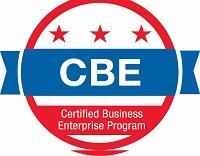The Defense Department doesn’t rely 100% on contractors for its needs. It also uses what it calls the organic industrial base. A network of government-owned facilities that manufacture things like howitzer shells and replacement parts for vehicles and aircraft. But the average organic factory is 80 years old. So the Army has a comprehensive plan to revitalize these facilities. At this week’s Association of the U.S. Army conference, the Federal Drive with Tom Temin spoke with the director of the Organic Base Modernization Task Force, Stephanie Hoaglin.
Stephanie Hoaglin The Army’s organic industrial base consists of 23 sites. There’s three different types of sites. There’s ammo plants, arsenals and depots. They span the entire U.S. and they all have different purposes for what they do for the army. So the depots do a lot of remanufacturing and maintenance, arsenals make things, and the ammo plants produce ammo for all of the services and store and ship ammo as well.
Tom Temin Yeah. So it is scattered all over the country, isn’t it?
Stephanie Hoaglin Yes, it is.
Tom Temin And the issue then for modernization is what? Just old factories and old equipment. What’s going on?
Stephanie Hoaglin So the average age of our facilities is about 80 years old. Many of them were erected in the 1940s. And so we’ve continued to support the needs of the warfighter even without pulling our installations into the modern era. So we’re realizing, Congress pointed out your sites are quite antiquated, and you probably need to do a little bit of updating. So we’ve created a 15 year strategy to really get after that. And we are looking not only at upgrading our infrastructure and bringing things into a more modern state, but looking at our equipment and processes as well, so we can bring all of those things to the 21st century and be more efficient, effective with what we have.
Tom Temin Sure. And what is your estimate of what it would cost to take it to be state?
Stephanie Hoaglin So right now we have an $18 billion plan across the 15 years, but that does not take into account inflation and the growing costs of construction that we’re experiencing.
Tom Temin And what has Congress dished out so far?
Stephanie Hoaglin They’re wide support for the plan so far. For our first five years, they give us about $4 billion.
Tom Temin So you have real money to work with.
Stephanie Hoaglin Yes. So we just finished our first year modernization. The kick off was October 1, 2023. So we finished this year and we had just over $1.5 billion invested in our sites this year.
Tom Temin Got it. And of the three types of sites you mentioned, there are the munitions plants.
Stephanie Hoaglin Yes.
Tom Temin The arsenals. The depots.
Stephanie Hoaglin Those are the three. So ammo plants, depots and arsenals.
Tom Temin And what’s at the top of the priority? Or do they all kind of depends on the individual?
Stephanie Hoaglin It depends on the individual. So Army has a prioritization scheme in which we are looking at some of the most critical things first, like human health and safety. So we’re addressing some of the infrastructure. So at an animal plant removes the person from the production process, increasing the safety factor. At some of our munitions sites we need new equipment, new welding equipment, new painting equipment. And so we’re thinking of safety of the workforce and quality of life. So we’re trying to make processes easier, faster and more cost effective.
Tom Temin Yeah, the quality of life is probably more important than it sounds, because often these are in remote areas across the river from a city, but not in the city or whatever the case might be. And if they are old facilities, you want people to be happy going in there?
Stephanie Hoaglin Yes, definitely. We need help to retain those employees. So many of our workforce are generational, so their parents and their grandparents work there and they’re coming back. And to your point, lots of our sites are remote. And in some instances, we’ve actually had the community approach upon us. And so our candidate pool is much bigger. But with that also means industry is in the area. So we do lose candidates to industry as well. So it’s a very important factor as we’re trying to modernize our sites.
Tom Temin Yes, the organic base personnel. We had that discussion earlier is really critical to the modernization in some ways.
Stephanie Hoaglin It is.
Tom Temin All right. I want to ask you about the ammo plants. Earlier this year and maybe towards the end of last year, there was a worldwide shortage of a particular size shell used by almost every army and on many, many platforms. These are produced in part by the organic industrial base and in part by commercial industry. Is there a rough knowledge of how much of the ammo needs of the army is produced by the plants versus how much they have to buy outside?
Stephanie Hoaglin So all of the common munitions are produced by Joint Munitions Command. So for the Army, so we call them the single manager for conventional ammunition. And they’re doing all of that work for us. And so the 155 shells, which we can say, they are being produced by our ammo plants. And I think there’s a misconception that each site is making those. But what’s actually happening is each site is making a component that completes the shell, and they go from site to site to be finished.
Tom Temin So is the plan maybe to have beginning to end of single location or multiple locations or will that methodology continue?
Stephanie Hoaglin It will continue as is for a multitude of reasons. But right now, the plan is just to help increase capacity at all of those sites to support this current surge. And then we’ll reevaluate and see if we need to go back to the old capacity or leave it as is.
Tom Temin And if you look at that particular commodity, continue that 155 millimeter shell. They’re pretty heavy, a man can hoist it I guess if he can have a pretty good curling capacity and hold this thing. But I imagine even though it looks like an old hunk of metal, there’s probably a lot of modernization in the way it is produced, in the way the metal is processed, in the way the energetics inside it are processed and so forth. It’s not the same shell as yesteryear, is it?
Stephanie Hoaglin It’s not. But what’s changed more is the way that we actually manufacture the shell as a whole. We’ve looked at ways to do our forging processes better, heat treat better. How do we move these things with removing the human from tthe shell itself so that they’re not picking it up? Because it is quite heavy. A couple of our sites have had a lot of modernization dollars to look at how we change the way we manufacture energetics. We’ve opened up additional facilities that are more modern to help us to create the metal shell, because we needed more than we thought we did. So it’s really the process itself. One of the things that’s really interesting is how we inspect the shell. And we actually worked with manufacturing innovation institutes to find a business partner who had a scanning methodology. So the person no longer needs to pick it up and rotated around. There’s a scanner that looks at the whole shell and tells us whether or not it conforms to the technical data.
Tom Temin We’re speaking with Stephanie Hoaglin. She’s director of the Organic Industrial Base Modernization Task Force, part of the Army Materiel Command. So then when you describe new annealing and new forging, new heat treating, this means all new equipment, because that’s where industry is going.
Stephanie Hoaglin Yes.
Tom Temin And where do you get the knowledge and input of what’s the state of the art? Is it automotive manufacturing and aircraft or what?
Stephanie Hoaglin So much of it resides at the facilities at South by the operating contractor. They’ve been at these sites for quite some time. And so they know the nuanced processes that are necessary and what types of equipment they need. And then they work with industry to incorporate that equipment into the facility.
Tom Temin So there’s a training component I suppose once we’re going to use a new forging method or a new heat treating method, people have to know how to do that.
Stephanie Hoaglin Yes. And so the Manufacturing innovation institutes help us with that as well. It’s a partner of the DoD. And they create an ecosystem of folks who help us to modernize our processes so we can become more efficient.
Tom Temin And all of these facilities must look like a big field of young birds with their mouths open, and you need a worm drop in each of those beaks. How do you prioritize? What’s the data gathering and what’s the analysis that goes into saying, well, the first 4 billion has to go here, here, here and here?
Stephanie Hoaglin Yeah. So we have a system called Vulcan and it’s the Army’s decision making tool, and there’s an algorithm that runs in the background. And as the installations enter data about operational impacts, what systems it supports, whether it’s support to a signature modernization effort coming online or an enduring system. And each of those elements have a different weight associated with what we’re trying to accomplish, and it ties to higher Army strategic priorities. So as we collect all that data, it gets tracked and stacked in bulk, and then we come together twice a year for what we call the OMB modernization war games. And the sites come and tell us the impacts of their projects to the army senior leaders, and they make decisions about which projects go first.
Tom Temin So it is a structured decision making process, and not who’s yelling the loudest.
Stephanie Hoaglin Yes. We removed the human element from it, definitely.
Tom Temin And I always wondered, too, how the transition happens to the organic industrial base for spare parts. As platforms age we’re standing at AUSA across from some large green earth moving device that’s the next generation of a ground vehicle for the Army. And the supplier probably has a contract for the parts and maintenance at some point. But I know that some platforms are really old helicopters and some that rolls or flies. When does it become organic industrial base to forge and fix the new parts versus contractors.
Stephanie Hoaglin So when new systems come online, there’s actually a transition plan, a transition to sustainment plan that happens. And they give us a timeframe in which we think we’re going to start taking over the maintenance of or generation of spare parts. And to your point, some systems we use, we intended to stop using them after 10 or 15 years. But here we are 40 years later, still using those systems. So when we find parts that are now obsolete or the manufacturer doesn’t want to make them, the DoD takes that on and we work them at our arsenals.
Tom Temin And the manufacturer will give you the plans if you want.
Stephanie Hoaglin Sometimes, it depends. Sometimes we bought them, sometimes we haven’t. We’ve been doing some reverse engineering. It’s always in collaboration with the OEM to make sure we’re doing the right thing in the right place, but not always. So sometimes we’re kind of a rock stuck in a hard place and we need to figure it out.
Tom Temin Crazy. And what is your background that you bring to this? Are you a metal bender yourself?
Stephanie Hoaglin So I started at the Joint Manufacturing and Technology Center in Rock Island, Illinois, as a materials engineering chief. So I worked in the test laboratory, did a lot of foundry work, testing of parts, paint. So pretty involved with our industry. And then moved my way up to AMC, where I help them now to evolve.













